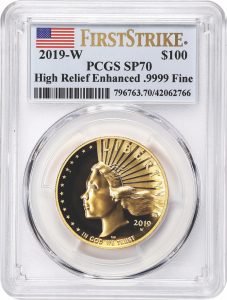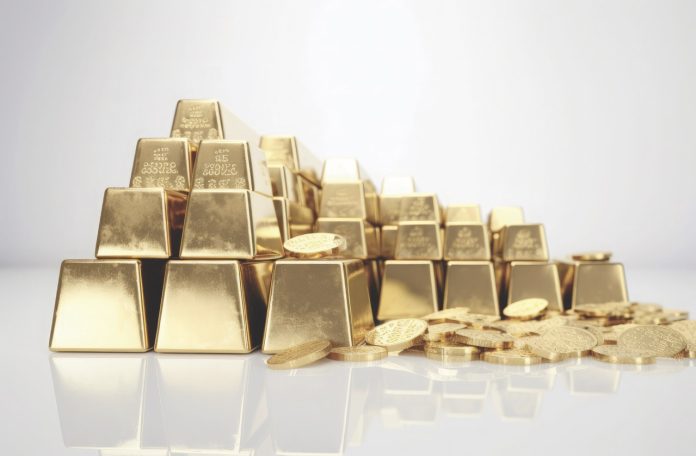
ALL THAT GLITTERS IS THE YELLOW METAL
During my meeting with American publishing executive and financial guru Steve Forbes in
October 2023, he told me that gold could rise to $2,500 in 2024 “and even higher [depending on who wins] the election.” I already believed gold was on its way to setting new record prices, so we shared our reasoning with one another. At the time, gold was trading at around $1,973 per ounce and now we are already halfway to $2,500 per ounce, with prices hitting $2,278 in early April.
After reviewing all of the factors in play, here are 10 reasons why gold will complete the second half of this leap to $2,500 per ounce, or higher, depending on who wins the election.
#1: The Fed may cut interest rates earlier than expected and by more than expected. Right now, most market pundits think the Federal Reserve will wait to make their first 0.25% cut in the Fed Funds interest rate and announce three cuts before the election. However, what if they make all three cuts at once, slashing the rate by 0.75% in one move to avoid looking like they are tampering with the election process? That could send a shock wave around the world, supercharging gold, perhaps by $100 in a day or two.
#2: Central banks will continue their record-setting accumulation of gold. Before 2022, central banks never bought more than 656 metric tons of gold in any single year, but they bought 1,082 metric tons in 2022 and added another 1,037 tons in 2023, according to World Gold Council data. Central banks have been net buyers of gold every year since 2010, with the amount growing every year since 2020. The People’s Bank of China is the biggest buyer and the people of China are also buying record amounts. The National Bank of Poland was the next largest gold buyer in 2023, followed by the Monetary Authority of Singapore.
#3: Gold rises in U.S. Presidential election years, especially when it’s Trump vs. Biden. Gold has risen strongly in the past four Presidential election years—and especially strongly the last time these two aging candidates squared off. In 2020, the price of gold bullion rose 25% and silver rose almost twice that much. If gold rises 25% from its starting price of $2,062.50 this year, it will reach $2,577 by year’s end.
#4: Inflation is returning, in both the main indicators and in hiding. During the first two months of 2024, the two main inflation indicators—the Consumer Price Index (CPI) and the Producer Price Index (PPI)—each rose dramatically higher than in previous months and faster than most economists expected. There are also the hidden costs, not included in either index, showing the higher cost of debt service due to the Fed’s rate increases. A new paper by Democratic Party economist Larry H. Summers and others calculated the real Consumer Price Index was 7% at the end of 2023, not the 3% the CPI claimed.
#5: Private buying in India and China is growing rapidly. Demand for gold by the citizens in China is “insatiable,” according to a Wall Street Journal report, mostly due to “fear buying” after China’s real estate and stock markets have fallen sharply and stayed down, wiping out the wealth of a generation. China is currently fighting deflation in those two big markets, while nearby India has a healthier economy and is fighting inflation. Private gold buying is soaring there, too, so inflation is serving as both an inflation hedge and deflation hedge in the two most populous nations on earth, encompassing 2.8 billion people.
#6: Major Wall Street firms are jumping on the gold bandwagon late as usual. Despite falling gold Exchange Traded Fund (ETF) sales by traders for nine straight months, major U.S. institutions have raised their gold target price for 2024. Citigroup, J.P. Morgan and TD Securities each have $2,300 price targets for gold in 2024. All I can say is, it’s about time. These moves should drive more customers to buy gold and increase gold ETF sales.
#7: Biden’s debt spiral is running out of control. President Biden submitted his Fiscal 2025 Budget to Congress and it shamelessly calls for “reducing the deficit” from $1.86 trillion in 2024 to just” $1.78 trillion in 2025, but that is based on raising taxes on the rich and corporations, a formula that has not worked historically. In the first five months of FY 2024, which began starting October 1, 2023, Biden’s big spenders have run up $903 billion in red ink, a $2 trillion annual rate. Total debt is now over $34 trillion.
#8: Entitlements make “balancing the budget” impossible without lowering benefits. In a nation addicted to government benefits, it will be difficult to balance the budget—no matter who wins in 2024. The current government debt-to-Gross Domestic Product (GDP) ratio is above 130%. We have only been near this level once before, in 1945, when the ratio was 120% of GDP after World War II, but two decades of mostly balanced budgets brought that ratio down to 40%. Now, 60 years after former U.S. President Lyndon B. Johnson added Medicare and new entitlements, our hands are tied. We can only hyper-inflate our way out of debt by making massive cuts in services, entitlements or military spending.
#9: Wars threaten shortages and high inflation in food and energy. Thankfully, North America is food- and energy-independent, but the rest of the world isn’t energy-independent. Wars in the Middle East and Ukraine—and possibly elsewhere soon—raise the specter of food and energy shortages. Russia is a primary fertilizer and energy producer and the Middle East is an energy provider to most of the Eastern hemisphere. Wars near shipping lanes are also threatening the distribution of food and energy. On top of that, European farmers struggle to comply with energy shortages and rules demanded by the Paris Climate Accord and the EU.
#10: Gold Fever is contagious. We have learned from the 1976-1980 and 2001-2011 bull markets—not to mention the 1849 California Gold Rush and 1896 Klondike Gold Rush—that Gold Fever is contagious. Once enough investors buy gold, the fever begins to spread. Then Wall Street catches the fever and coin dealers advertise more, bringing in more customers. Those customers typically buy more coins and drive gold prices up as well before moving into buying rare coins. It’s the opposite of a vicious cycle and more like a “virtuous circle” of more buyers generating more buyers.
To subscribe to COINage magazine click here.

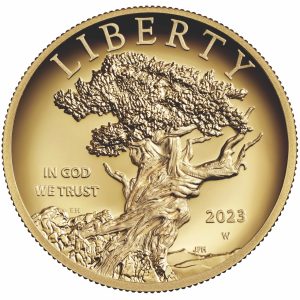
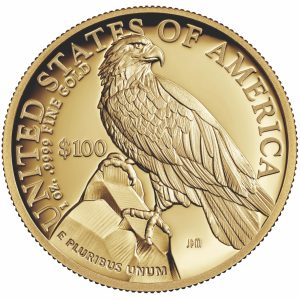
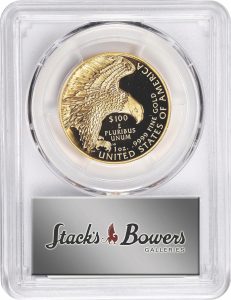 .
. 